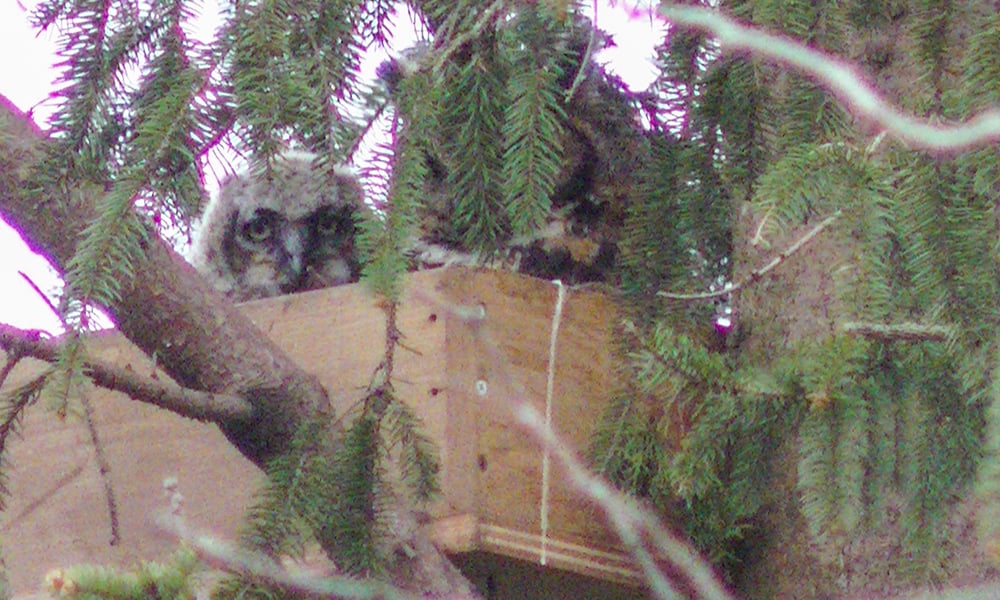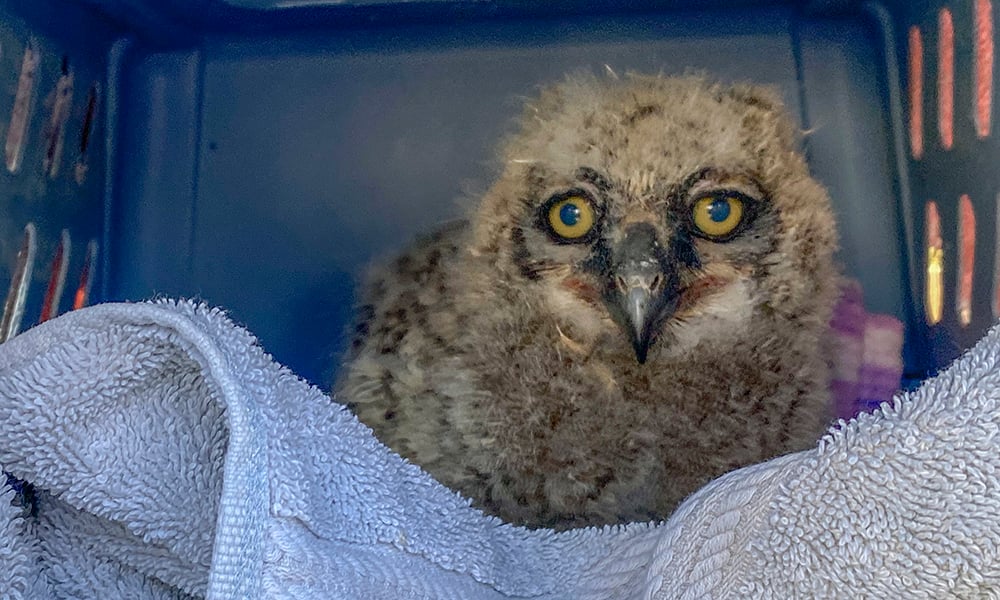
A great horned owlet was reunited with its family thanks to DuPage Forest Preserve District forestry workers and Willowbrook Wildlife Center.
Herb Dolowy and his daughter noticed something under the Norway spruce in their Manhattan backyard and thought it was a plastic bag or squirrel. Looking at the object through binoculars, Dolowy realized it was a baby great horned owlet that had fallen out of its nest in the tree.
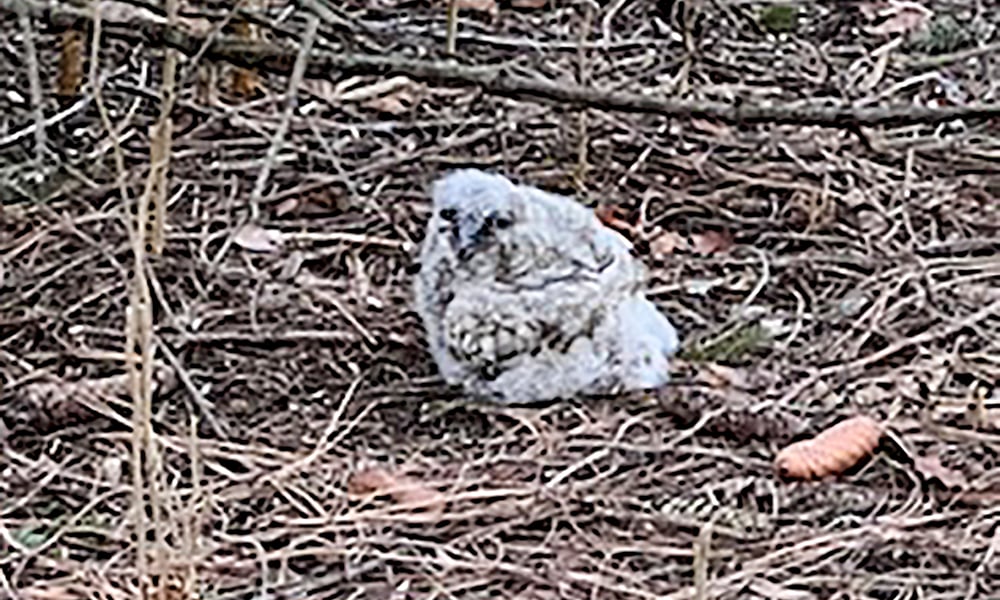
Here's how Herb Dolowy found the great horned owlet on the ground under a tree in his backyard. Photo by Herb Dolowy
Dolowy put the owlet in a box and covered it with a towel to keep it calm and warm while he figured out what to do with it. With help from volunteers from the Chicago Bird Collision Monitors, the owlet was brought to Willowbrook Wildlife Center in Glen Ellyn.
Willowbrook staff examined the owlet and concluded it was a healthy nestling with no injuries. The owlet was given fluids and food and kept warm.
Plans to return the owlet to its nest were made with forestry workers in the Forest Preserve District’s Grounds Management department.
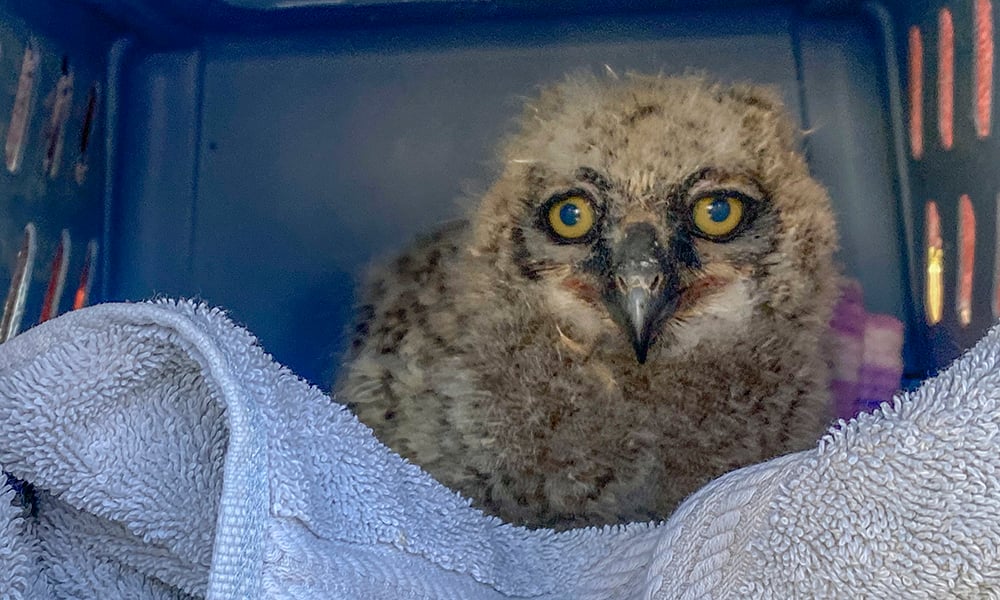
Willowbrook rehab wildlife keeper Jana Plescia opens the carrier door to take the owlet out so it can be returned to its nest.
Returning Home
Forest Preserve District forestry workers Kenneth Ruhaak and Ian Wolf met with Willowbrook staff at Dolowy’s house to renest the owlet recently. Secured with a harness, Ruhaak climbed the tree, installed a nesting platform, and added some nesting material before placing the owlet in the nest. Later that day, Dolowy confirmed the owl Mom returned to the nest and was caring for the owlet.
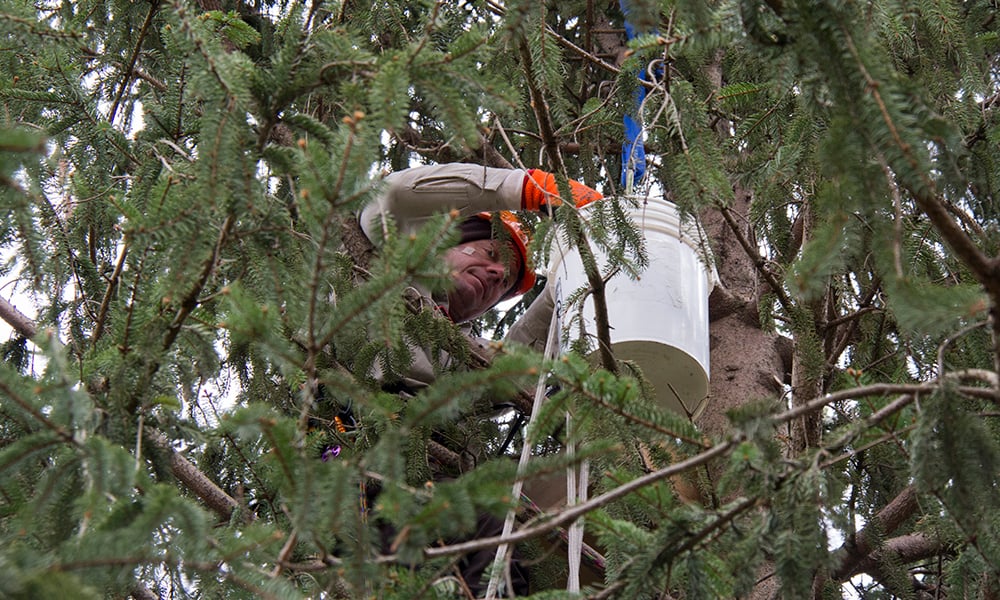
Forestry worker Ken Ruhaak prepares to return the great horned owlet to its new nest.
What to Do If You Find One
Unfortunately, it’s quite common for owlets to fall out of their nests this time of year after storms or high winds. Great horned owls do not build their own nests but instead adopt a nest that was built by another species, usually other large birds such as hawks, eagles, crows, and herons. They also nest in tree cavities. Willowbrook usually renests 3 – 8 owlets a year, usually great horned owls.
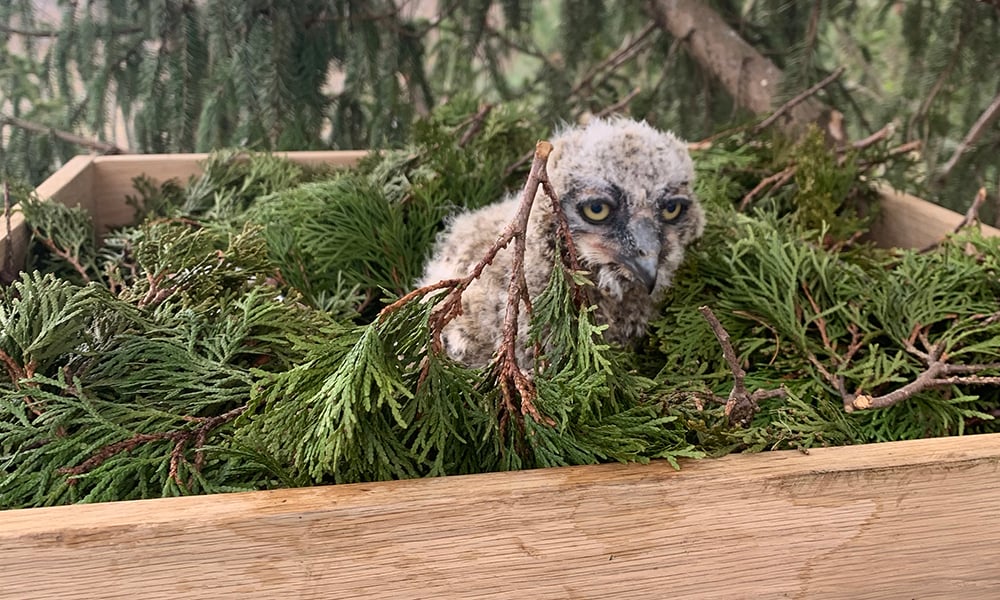
The owlet after it was placed inside its new nest. Photo by Kenneth Ruhaak
If you find one on the ground, Willowbrook staff recommend calling the center at 630-942-6200 or emailing staff at willowbrook@dupageforest.org. A staff member can help determine if the owlet is sick or too young to be outside the nest. It’s normal for a fledgling owlet to briefly be on the ground, and Willowbrook does not recommend handling these healthy individuals.
Caution should be used with great horned owls, as parents are quite protective. It’s best to first observe the area for a time to see if parents are around or a nest can be located. Then, call Willowbrook or a licensed rehabilitator before taking any action.
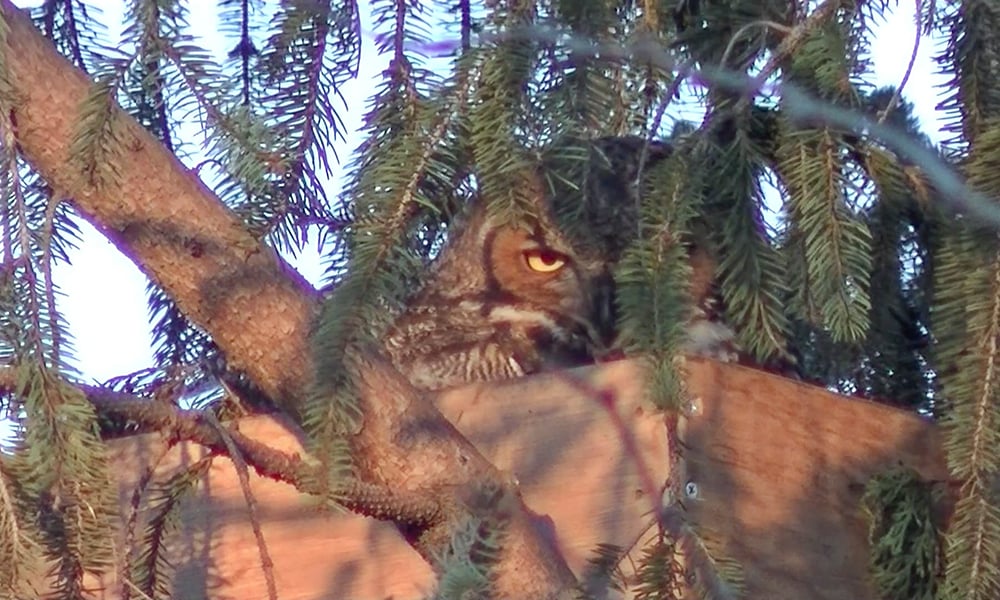
The mom owl returns to the nest after the owlet was returned. Photo by Herb Dolowy
Spring Babies
During the spring season, Willowbrook reminds residents that it’s normal for wild animals to leave their young along for several hours at a time while they look for food. Inexperienced individuals who try to raise or treat them inevitably can produce unhealthy, tame animals that cannot survive in the wild. Human intervention may be needed if an animal is injured or truly abandoned.
If you find a wild animal exhibiting signs it needs help, get the information you need to assess its condition at our wildlife rescue advice page. Determine if it needs help, and then take action.
